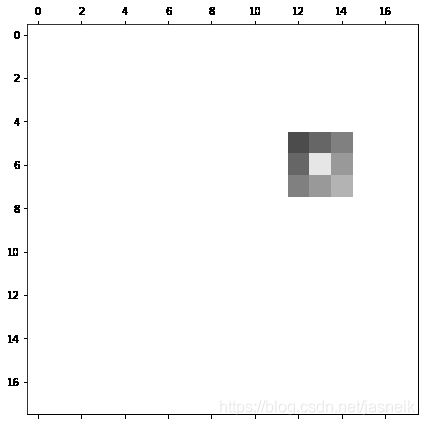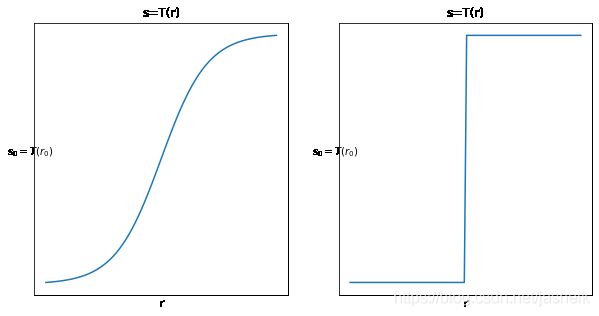第3章 Python 数字图像处理(DIP) - 灰度变换与空间滤波1 - 灰度变换和空间滤波基础、Sigmoid激活函数
这里写目录标题
-
- 本节的目标
- 背景
-
-
- 灰度变换和空间滤波基础
-
本节的目标
- 了解空间域图像处理的意义,以及它与变换域图像处理的区别
- 熟悉灰度变换所有的主要技术
- 了解直方图的意义以及如何操作直方图来增强图像
- 了解空间滤波的原理
import sys
import numpy as np
import cv2
import matplotlib
import matplotlib.pyplot as plt
import PIL
from PIL import Image
print(f"Python version: {sys.version}")
print(f"Numpy version: {np.__version__}")
print(f"Opencv version: {cv2.__version__}")
print(f"Matplotlib version: {matplotlib.__version__}")
print(f"Pillow version: {PIL.__version__}")
Python version: 3.6.12 |Anaconda, Inc.| (default, Sep 9 2020, 00:29:25) [MSC v.1916 64 bit (AMD64)]
Numpy version: 1.16.6
Opencv version: 3.4.1
Matplotlib version: 3.3.2
Pillow version: 8.0.1
def normalize(mask):
return (mask - mask.min()) / (mask.max() - mask.min() + 1e-5)
背景
灰度变换和空间滤波基础
g ( x , y ) = T [ f ( x , y ) ] (3.1) g(x, y) = T[f(x, y)] \tag{3.1} g(x,y)=T[f(x,y)](3.1)
式中 f ( x , y ) f(x, y) f(x,y)是输入图像, g ( x , y ) g(x, y) g(x,y)是输出图像, T T T是在点 ( x , y ) (x, y) (x,y)的一个邻域上定义的针对f的算子。
最小的邻域大小为 1 × 1 1\times 1 1×1
则式(3.1)中的 T T T称为灰度(也称灰度级或映射)变换函数,简写为如下:
s = T ( r ) (3.2) s=T(r) \tag{3.2} s=T(r)(3.2)
对比度拉伸
- 通过将 k k k以下的灰度级变暗,并将高于 k k k的灰度级变亮,产生比原图像对比度更高的一幅图像
阈值处理函数
- 小于 k k k的处理为0,大于 k k k的设置为1,产生一幅二级(二值)图像
# 显示一个图像的3x3邻域
height, width = 18, 18
img_ori = np.ones([height, width], dtype=np.float)
# 图像3x3=9个像素赋了不同的值,以便更好的显示
kernel_h, kernel_w = 3, 3
img_kernel = np.zeros([kernel_h, kernel_w], dtype=np.float)
for i in range(img_kernel.shape[0]):
for j in range(img_kernel.shape[1]):
img_kernel[i, j] = 0.3 + 0.1 * i + 0.1 * j
img_kernel[kernel_h//2, kernel_w//2] = 0.9
img_ori[5:5+kernel_h, 12:12+kernel_w] = img_kernel
fig = plt.figure(figsize=(7, 7), num='a')
plt.matshow(img_ori, fignum='a', cmap='gray', vmin=0, vmax=1)
plt.show()
为什么会把Sigmoid函数写在这里
从Sigmoid函数的图像曲线来看,与分段线性函数的曲线类似,所以在一定程度上可以用来代替对比度拉伸,这样就不需要输入太多的参数。当然,有时可能也得不到想要的结果,需要自己多做实验。
sigmoid函数也是神经网络用得比较多的一个激活函数。
def sigmoid(x, scale):
"""
simgoid fuction, return ndarray value [0, 1]
param: input x: array like
param: input scale: scale of the sigmoid fuction, if 1, then is original sigmoid fuction, if < 1, then the values between 0, 1
will be less, if scale very low, then become a binary fuction; if > 1, then the values between 0, 1 will be more, if scale
very high then become a y = x
"""
y = 1 / (1 + np.exp(-x / scale))
return y
# sigmoid fuction plot
x = np.linspace(0, 10, 100)
x1 = x - x.max() / 2 # Here shift the 0 to the x center, here is 5, so x1 = [-5, 5]
t_stretch = sigmoid(x1, 1)
t_binary = sigmoid(x1, 0.001)
plt.figure(figsize=(10, 5))
plt.subplot(121), plt.plot(x, t_stretch), plt.title('s=T(r)'), plt.ylabel('$s_0 = T(r_0)$', rotation=0)
plt.xlabel('r'), plt.xticks([]), plt.yticks([])
plt.subplot(122), plt.plot(x, t_binary), plt.title('s=T(r)'), plt.ylabel('$s_0 = T(r_0)$', rotation=0)
plt.xlabel('r'), plt.xticks([]), plt.yticks([])
plt.tight_layout
plt.show()

